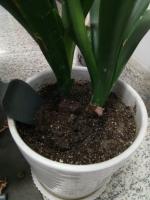Which Type of Plant Vascular Tissue Moves Water?
Plants have a complex network of tissues that helps them perform various functions. Vascular tissues are one such class of tissues that help in the transportation of essential nutrients and water throughout the plant. Vascular tissue comprises two types of tissues – xylem and phloem.
Xylem – the Water Transporter
Xylem is a tissue responsible for the transport of water from the roots to the other parts of the plant. It is made up of several types of cells, including xylem parenchyma, xylem fibers, and tracheids. Xylem primarily functions by transporting water and dissolved inorganic substances upwards from the roots towards the leaves. This upward movement of water is known as transpiration.
The xylem vessels in angiosperms have several unique features. Firstly, angiosperm xylem vessels possess perforations, which allow easier and quicker water movement. Secondly, the end walls of the xylem vessels in angiosperms contain pits that permeate freely. Lastly, the scale of xylem vessels in angiosperms is generally larger than the vessels found in gymnosperms.
Phloem – the Food Transporter
Phloem, unlike xylem, transports the sugars and organic nutrients produced by the plant, such as glucose. Phloem can move in both an upwards and a downwards direction. Still, typically, phloem moves materials downwards from the leaves where photosynthesis occurs towards the roots and other parts of the plant.
The conducting cells in the phloem are known as sieve tube elements, which are arranged end-to-end and connected by sieve plates, an area where dissolved substances move from one tube element to another. Apart from this, phloem also contains companion cells that originate from the same parent cells as sieve tube elements. Companion cells are essential for phloem function and help sieve elements to attain a high metabolic rate.
Xylem and Phloem Work Together
Xylem and phloem work together to support the plant's overall function. They form a continuous network of tubes that work together to move water, minerals, and nutrients across the plant. The xylem is primarily responsible for moving water and inorganic nutrients from the roots upwards, while the phloem moves the organic nutrients produced by the plant downwards.
In conclusion, the xylem and phloem both contribute significantly to the transportation processes in plants. The xylem moves water and inorganic nutrients, while the phloem transports organic nutrients produced by the plant. Together, they help to maintain the proper functioning of the plant by supplying the necessary nutrition and supporting growth and development.

 how many times do yo...
how many times do yo... how many planted tre...
how many planted tre... how many pine trees ...
how many pine trees ... how many pecan trees...
how many pecan trees... how many plants comp...
how many plants comp... how many plants can ...
how many plants can ... how many plants and ...
how many plants and ... how many pepper plan...
how many pepper plan...
































